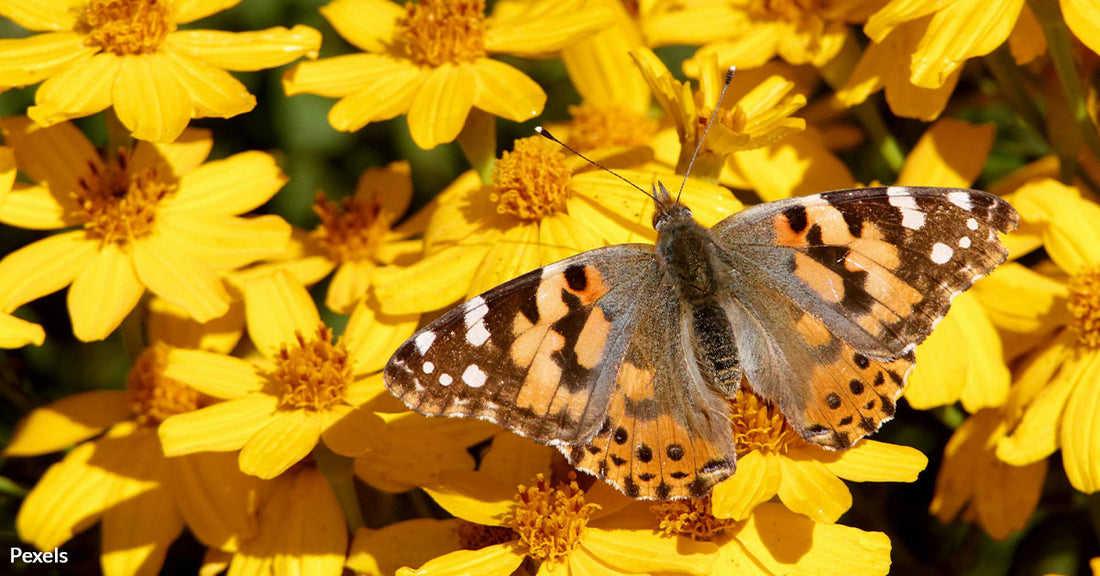Butterflies Defy Nature by Flying 2,600 Miles Across the Atlantic Without Stopping
Matthew Russell
In an astonishing discovery, painted lady butterflies (*Vanessa cardui*) have been documented completing a 2,600-mile non-stop journey across the Atlantic Ocean. This feat, revealed through groundbreaking research, sheds new light on the capabilities of these seemingly delicate insects.
Scientists pieced together evidence over a decade to confirm the butterflies’ record-breaking migration, challenging assumptions about insect resilience and mobility.

A Decade-Long Mystery Solved
The story began in 2013 when Dr. Gerard Talavera, an entomologist at the Botanical Institute of Barcelona, spotted a group of worn and tattered painted lady butterflies on a beach in French Guiana. These butterflies, typically found in Europe, Africa, and North America, were far from their usual habitats. Their ragged wings hinted at an extraordinary journey. Talavera and his team embarked on a mission to uncover how they had arrived on South American shores, as reported by CNN.
Genetic and Environmental Clues
To trace the butterflies’ origins, researchers analyzed their DNA and found that they shared genetic markers with populations from Europe and Africa. This ruled out the possibility of a North American origin. Further insights came from isotope analysis of their wings, which preserved chemical signatures indicating they had developed in western Europe or western Africa, according to Live Science.
The team also examined pollen stuck to the butterflies’ bodies. DNA sequencing of the pollen revealed it came from *Guiera senegalensis* and *Ziziphus spina-christi*, plants native to West Africa. These shrubs bloom during the rainy season, aligning with the butterflies’ migration timeline, Smithsonian Magazine reports.

The Role of Trade Winds
Weather data provided another crucial piece of the puzzle. Scientists discovered that strong trade winds, known as the Saharan Air Layer, likely carried the butterflies from Africa to South America. These winds are the same currents that transport dust from the Sahara Desert across the Atlantic. By gliding on these airflows, the butterflies could conserve energy during their journey, according to The New York Times.
The journey, which likely took five to eight days, alternated between active flight and wind-assisted gliding. Without the wind, the butterflies would have exhausted their energy after just 485 miles. This remarkable use of natural currents highlights how insects can exploit their environments for survival.

A Record-Breaking Migration
Painted ladies are known for their long migrations, such as their 9,000-mile trek between Europe and Africa. However, those journeys involve regular stops to feed and rest. Crossing the Atlantic non-stop marks a new level of endurance for any insect, let alone a butterfly.
Dr. Talavera described the discovery as “a brilliant piece of biological detective work,” a sentiment echoed by David Lohman, an evolutionary ecologist at the City College of New York, in an interview with Wildlife.org.
Implications for Science
This discovery opens new avenues for understanding insect migrations. Painted lady butterflies’ ability to cross the Atlantic underscores the importance of studying wind patterns and their effects on migratory species. As climate change continues to alter global weather systems, such migrations may become more common or take on new forms.
“This shows how strong and resilient these insects are,” study co-author Dr. Megan Reich told CNN.

Unraveling Nature's Secrets
The painted ladies’ epic journey exemplifies the resilience of life in the face of daunting odds. From the shores of West Africa to the beaches of French Guiana, these butterflies overcame challenges few thought possible. Their story not only expands our understanding of migratory behaviors but also serves as a reminder of the interconnectedness of ecosystems across continents.

